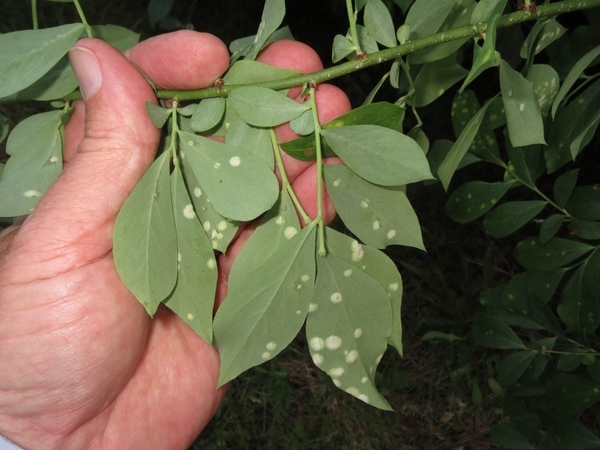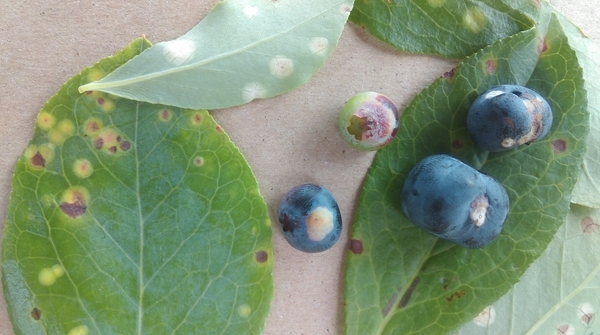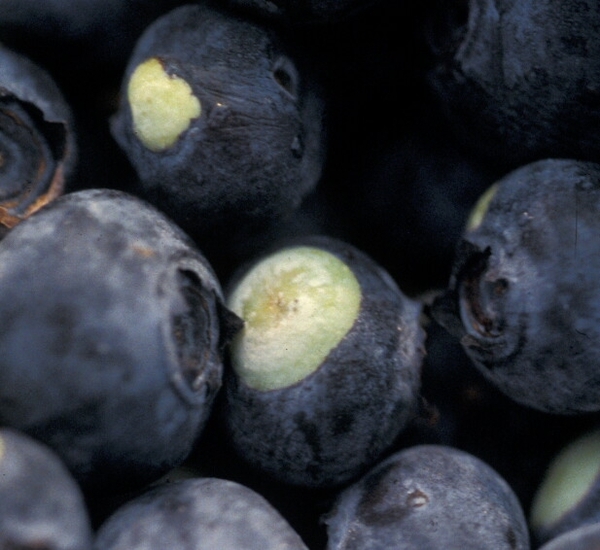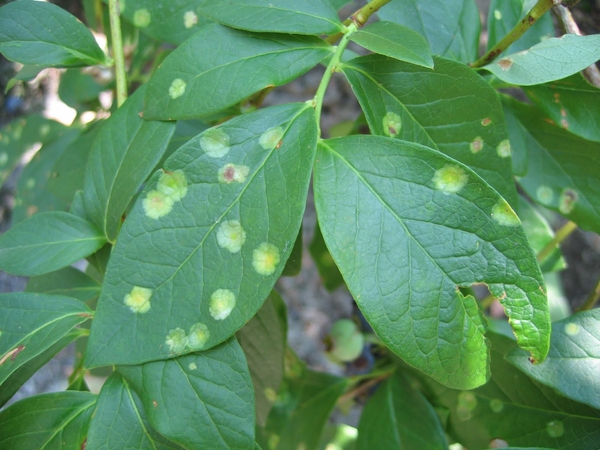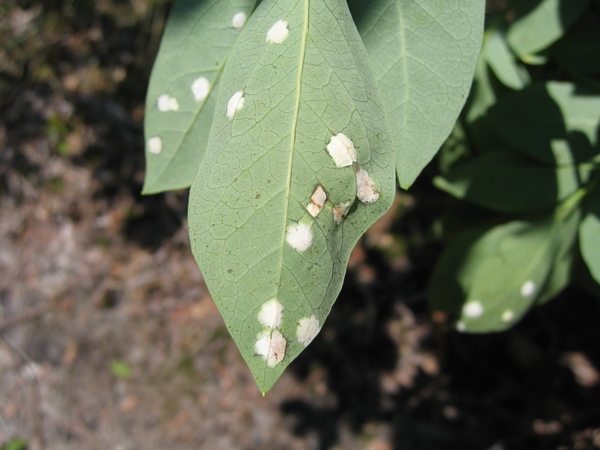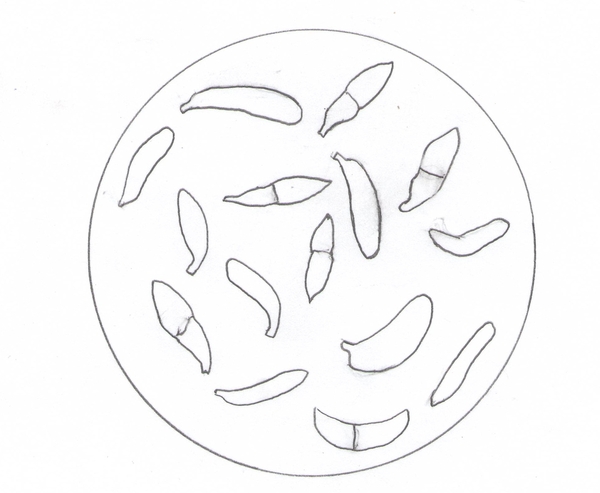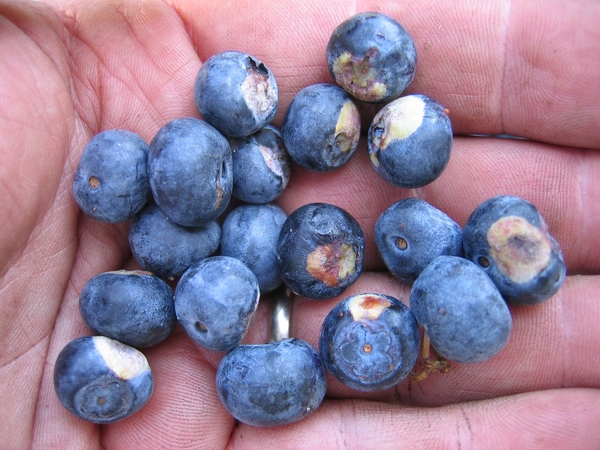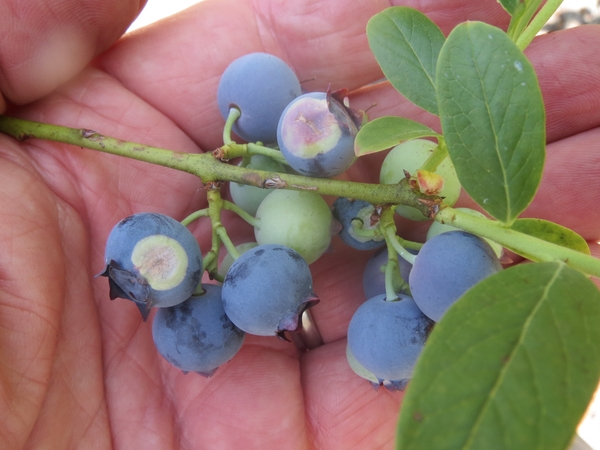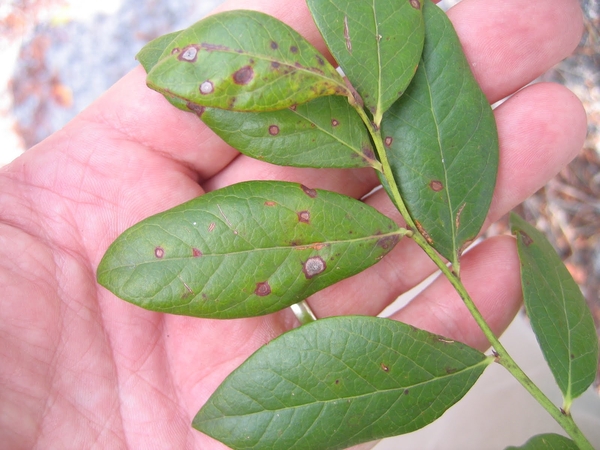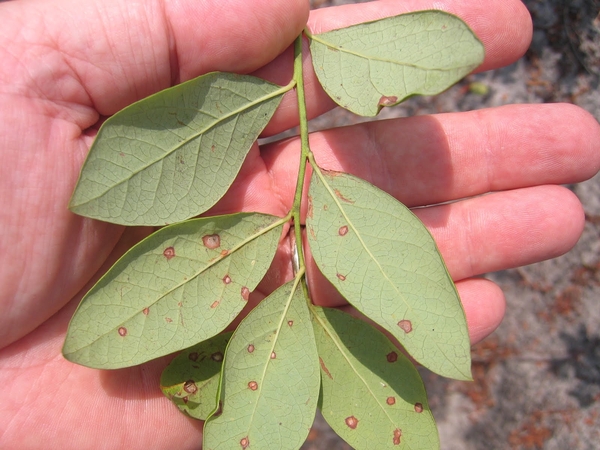Introduction
Exobasidium leaf and fruit spot is a fungal disease of blueberry that affects both leaves and berries. The fungus overwinters on the surface of stems, and in spring releases spores that infect emerging leaves and flowers. Leaf symptoms appear as pale green spots on the upper surface with pure white fungal growth on the underside. Infected spots on berries remain green and do not ripen. Spots become sunken and distorted over time and berries may drop prematurely.
General Information
The causal agent of blueberry leaf and fruit spot is Exobasidium maculosum. This pathogen is most common in the southeastern US; however similar symptoms are also seen on lowbush blueberry leaves in Maine and Canada caused by a similar pathogen. Host-specific fungal pathogens in the genus Exobasidium can also cause reddening, distortion and gall formation in leaf, flower and stem tissue on many different plant species worldwide. Examples include azalea leaf gall, camellia leaf gall, and red leaf disease of blueberry.
Symptoms and Signs
Exobasidium leaf and fruit spot of blueberry is characterized by sharply defined spots on leaves and fruit that vary up to approximately10 mm in diameter (3/8 inch), without the massive gall formation usually associated with Exobasidium diseases on other hosts. On the leaves, spots are visible on the upper surface as sharply defined circular or irregular pale green spots. On the underside of leaves, these spots develop pure white fungal growth (mycelium) in a thin layer, gradually turning brown as the spots senesce. In fruit, the disease causes a green spot that never ripens on an otherwise blue fruit, often becoming pinkish-green with faint white fungal growth on the surface of the spot. Infection does not cause fruit to decay or leak, but often causes a sunken area that results in misshaped fruit. This green spot on the surface of blue fruit is a highly visible defect and may cause fruit to be rejected by buyers. The fungus produces both basidiospores and conidia. Basidiospores are musiform (banana-shaped) to fusiform when viewed under a microscope.
Pathogen and Disease Cycle
The fungus (Exobasidium maculosum) overwinters as an epiphyte on the surface of dormant blueberry stems. New infections occur in Spring with the emergence of the first leaves and flowers. Leaf spots are seen prior to harvest. Symptoms on fruit are visible early in the green berry stage, but are difficult to see at first, only becoming noticeable when fruit begins to ripen. The disease is monocyclic, occurring only in Spring, and is not seen on successive flushes of vegetative growth later in the season. In summer, the initial leaf spots on the Spring flush of growth do not become larger, but instead become necrotic and dry. The necrotic tissue falls out, leaving a distinctive round hole in the leaf.
Best Management Practices
Cultural Control — To reduce disease, encourage air flow and reduce humidity in the blueberry field. Use drip irrigation instead of overhead irrigation, eliminate standing water, and remove trees on the perimeter that block air movement. Prune bushes to create an open canopy with good air flow.
Chemical Control — A single application of lime sulfur (calcium polysulfide) at the delayed dormant stage (about two weeks before bud break) will provide significant control of Exobasidium leaf and fruit spot – however, lime-sulfur is a caustic, corrosive, hazardous material and is not labeled for home garden use. Home garden control of Exobasidium relies on the use of protective foliar fungicides to prevent infection. Fungicides must be applied repeatedly from bud break through bloom.
Host Plant Resistance — Host resistance is not well documented. The disease is sporadic, and does not occur every year, or on every cultivar.
Publication date: April 18, 2022
N.C. Cooperative Extension prohibits discrimination and harassment regardless of age, color, disability, family and marital status, gender identity, national origin, political beliefs, race, religion, sex (including pregnancy), sexual orientation and veteran status.



